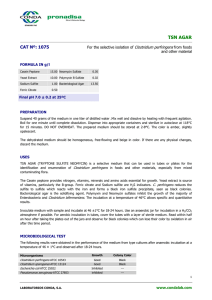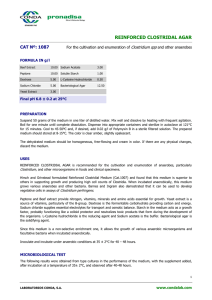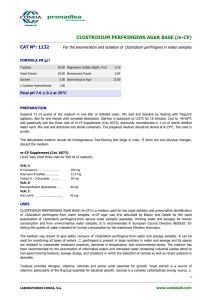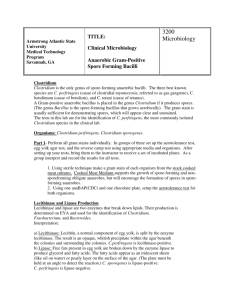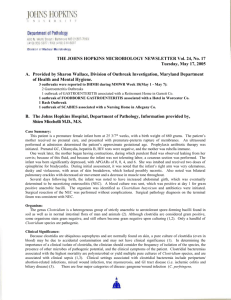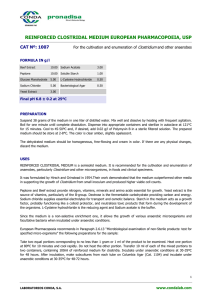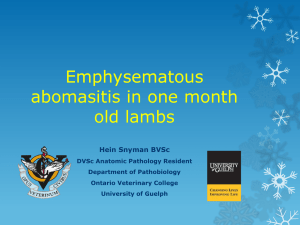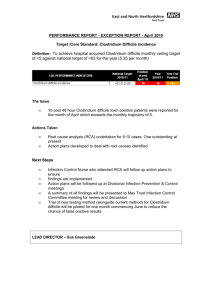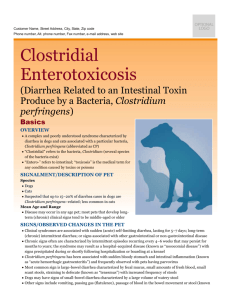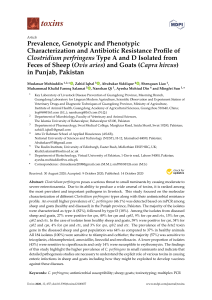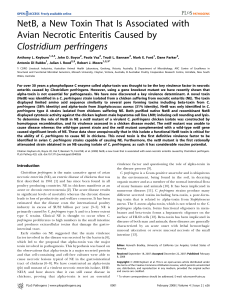T.S.C. AGAR BASE (TRYPTOSE SULFITE CYCLOSERINE) ISO 7937 CAT Nº: 1029
advertisement
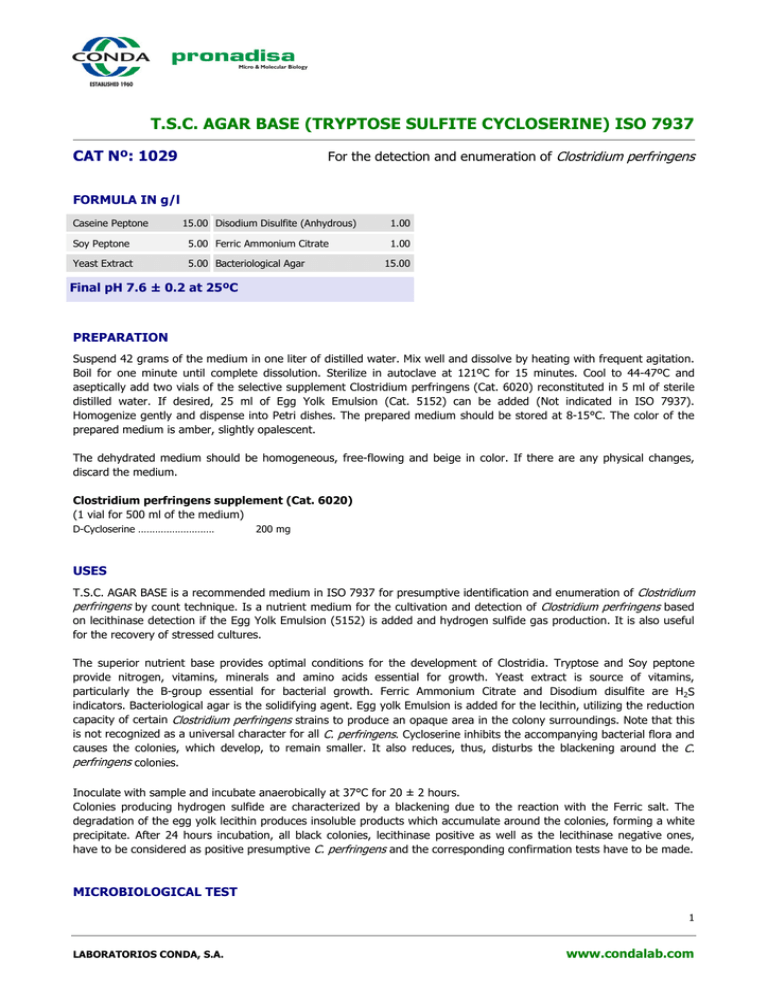
T.S.C. AGAR BASE (TRYPTOSE SULFITE CYCLOSERINE) ISO 7937 CAT Nº: 1029 For the detection and enumeration of Clostridium perfringens FORMULA IN g/l Caseine Peptone 15.00 Disodium Disulfite (Anhydrous) Soy Peptone 5.00 Ferric Ammonium Citrate Yeast Extract 5.00 Bacteriological Agar 1.00 1.00 15.00 Final pH 7.6 ± 0.2 at 25ºC PREPARATION Suspend 42 grams of the medium in one liter of distilled water. Mix well and dissolve by heating with frequent agitation. Boil for one minute until complete dissolution. Sterilize in autoclave at 121ºC for 15 minutes. Cool to 44-47ºC and aseptically add two vials of the selective supplement Clostridium perfringens (Cat. 6020) reconstituted in 5 ml of sterile distilled water. If desired, 25 ml of Egg Yolk Emulsion (Cat. 5152) can be added (Not indicated in ISO 7937). Homogenize gently and dispense into Petri dishes. The prepared medium should be stored at 8-15°C. The color of the prepared medium is amber, slightly opalescent. The dehydrated medium should be homogeneous, free-flowing and beige in color. If there are any physical changes, discard the medium. Clostridium perfringens supplement (Cat. 6020) (1 vial for 500 ml of the medium) D-Cycloserine ……………………… 200 mg USES T.S.C. AGAR BASE is a recommended medium in ISO 7937 for presumptive identification and enumeration of Clostridium perfringens by count technique. Is a nutrient medium for the cultivation and detection of Clostridium perfringens based on lecithinase detection if the Egg Yolk Emulsion (5152) is added and hydrogen sulfide gas production. It is also useful for the recovery of stressed cultures. The superior nutrient base provides optimal conditions for the development of Clostridia. Tryptose and Soy peptone provide nitrogen, vitamins, minerals and amino acids essential for growth. Yeast extract is source of vitamins, particularly the B-group essential for bacterial growth. Ferric Ammonium Citrate and Disodium disulfite are H2S indicators. Bacteriological agar is the solidifying agent. Egg yolk Emulsion is added for the lecithin, utilizing the reduction capacity of certain Clostridium perfringens strains to produce an opaque area in the colony surroundings. Note that this is not recognized as a universal character for all C. perfringens. Cycloserine inhibits the accompanying bacterial flora and causes the colonies, which develop, to remain smaller. It also reduces, thus, disturbs the blackening around the C. perfringens colonies. Inoculate with sample and incubate anaerobically at 37°C for 20 ± 2 hours. Colonies producing hydrogen sulfide are characterized by a blackening due to the reaction with the Ferric salt. The degradation of the egg yolk lecithin produces insoluble products which accumulate around the colonies, forming a white precipitate. After 24 hours incubation, all black colonies, lecithinase positive as well as the lecithinase negative ones, have to be considered as positive presumptive C. perfringens and the corresponding confirmation tests have to be made. MICROBIOLOGICAL TEST 1 LABORATORIOS CONDA, S.A. www.condalab.com The following results were obtained in the performance of the medium from type cultures, with the respective supplements added, after incubation at a temperature of 37°C and observed after 20 ± 2 hours under anaerobic conditions. Microorganisms Clostridium perfringens ATCC 13124 Growth Colony Color Good Black with opaque halo According to 11133 20 h/37°C (anaerobic atm.) (Productivity and Selectivity) Microorganisms Clostridium perfringens ATCC 13124 Clostridium perfringens ATCC 12916 Escherichia coli ATCC 25922 Inoculum (cfu/ml) 102 102 10 4/ 106 Productivity Quantitative pr ≥ 0.7 pr ≥ 0.7 Selectiviity Qualitative Specificity Qualitative Black colonies Black colonies Inhibited Reference media Productivity: Media Batch TS(C) already validated BIBLIOGRAPHY Sahidi S.A. and Ferguson A.R. (1971) Appl. Microbiol, 21 500-506. Harmon S.M., Kauttar D.A. and Peeler J.T. (1971) Appl. Microbiol. 21 922-927. Hauschild A.H.W. and Hilsheimar R. (1973) Appl. Microbiol. 27. 78-82. International standard ISO 7937 Microbiology of food and animal feeding stuffs-Horizontal method for enumeration of Clostridium perfringens –colony count technique ISO STORAGE 25ºC Once opened keep powdered medium closed to avoid hydration. 2ºC 2 LABORATORIOS CONDA, S.A. www.condalab.com
